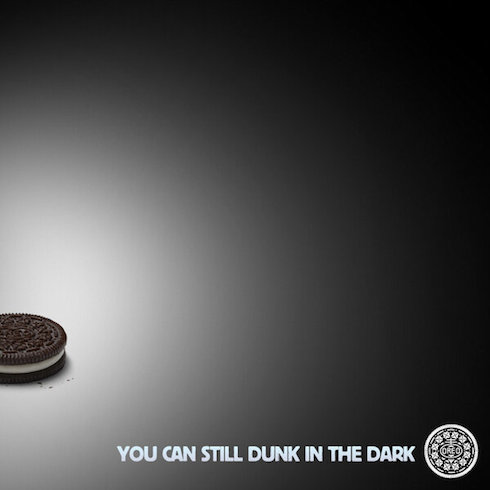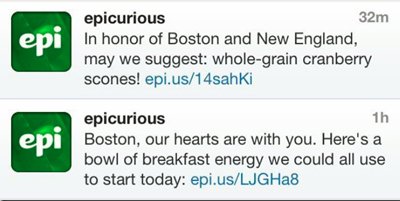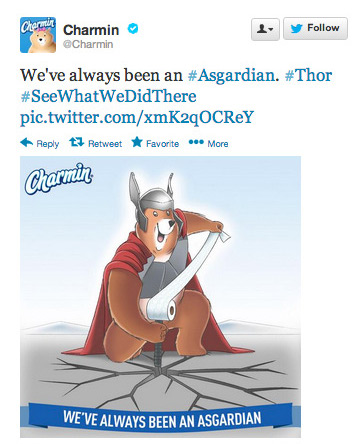By adaptive - January 8th, 2014

Capture the consumer with content that they want to talk about and share
Content has enormous power. It can bring customers to your door, create an identity for your organisation and above all become coveted material that is shared on a global scale. However, the wrong kind of content can also destroy your reputation and leave your business in tatters. The ultimate social goal is to create content that customers talk about, share and enjoy.
Danny Groner, Manager of Blogger Partnerships and Outreach at Shutterstock believes that to create content that customers talk about you need to start with the Zeitgeist on people’s minds and work from there.
“Shutterstock recently put together a series of Instagram videos focused on The Hunger Games,” says Groner, “Figure out what your audience is most interested in at the moment and find a way of entering that conversation. It’s easier to join an existing conversation than to begin one of your own.”
Oreo’s Superbowl success story is a prime example of a brand taking something outside of their area of influence and making it their own. The entire arena experienced a blackout and they tweeted ‘You can still dunk in the dark’. They hit over 10 thousand retweets in an hour. There you had a social media team that thought outside the box, was brilliant and bold, and tailored the social to the occasion. They knew people would turn to their phones during that blackout and that Twitter was the most efficient medium – easier to share and read on mobile.
That said, you can’t just latch on to any event or conversation and thrust yourself into the mix; it can smack of desperation and opportunism and have a very negative impact on your brand. Two good examples of this are the Epicurious series of tweets that offered breakfast cereal and scones as ways to cope with the Boston Marathon bombings, and Microsoft’s recent attempts to promote their search engine, Bing, during the Oscars.
The key is to keep your content tailored to the market and the conversation, to use it as an opportunity to promote your brand if possible, but not to twist the conversation to your own needs and, like the Bing social push, shove the sales talk into the social patter.
Be the best you can be
There is no ultimate content strategy that anyone can follow for huge social success, but there are those rules of thumb that can help to guide your business as it learns more about its market and how it interacts on social.
For Mike Van Der Heijden, Managing Director of Brand Vision he finds the following three ingredients vital in order to ensure content stands out from the crowd:
- Have totally unique content. Avoid sharing the same content as others. Spread your own message.
- Stop the funnies. Nobody wants to see a Friday Funny from every, single company that they follow. It’s lazy and a cliché.
- Be interesting. You will only get a few seconds as they pass by your post on their timeline, don’t waste it.
Karen Webber, Head of Marketing at Axonn Media, suggests:
- Originality – present an old idea in a fresh way or say something new
- Connect – resonate with your target audience
- Integrate – content needs to be well integrated on your site and it should be easy for people to interact with it and share it
There may be no recipe for viral success, but building content that offers insight, depth and meaning to those who read it will invariably keep them coming back for more.
The online audience is sophisticated enough to recognise when your brand is talking to them on their level, when your content is fake, and when you are link baiting them. To stay credible in their eyes avoid stupid stunts and tricks. This doesn’t mean you can never be wild or crazy – just think things through.
Climbing out of the box
Delivering a social campaign that’s wildly creative and insane can be incredibly successful. Brands such as Red Bull, Oreo (as mentioned earlier) and Charmin took a chance on an idea and it paid off. In fact, you could say that 2013 was the year that saw the fly-by-the-seat-of-your-tweet trend in social take off and 2014 could potentially offer brands even greater opportunities to take a chance and be bold.
“Experimenting not only gives you great insights, but it is a whole heap of fun,” says Lisa Renneisen at Bright Learning.“Social media is one great, big experiment for our brand. It’s so real and responsive we can test things out wonderfully there, and if something sticks we may bring it into our product or marketing.”
Like anything, of course, there is the dark side. Throwing social caution to the wind and being boldly innovative can go wrong.
“You can experiment, but be careful,” says Van Der Heijden. “What you think is funny or innovative can quickly backfire so run it past people internally before trying anything that is too ‘out there’. If you have a small following it is less risky as you can quickly control the situation, but having 1000s of followers slam your brand is a PR disaster.”
For Webber it is not so cut and dried. She believes that the level to which you can go with blue sky social thinking depends on the brand and that most could do with being a bit more creative.
“We all know people don’t remember – let alone share – dull content or updates,” she adds. “Make sure you take calculated risks and don’t let inexperienced people loose on your Twitter feed, for example. As long as your ‘out of the box’ activities are carefully planned and their effects monitored, they can really take social engagement to another level.”
Content that moves people, inspires them and excites them will be shared. If your content is tailored to your consumer, then your funny will make them laugh and your emotive plea will make them stop and think.
Woolworths in South Africa took a huge risk in hiring a choir to sing in one of their stores as an ode to the passing of Nelson Mandela. The resultant video went viral and thousands of people across the world stopped to pay attention and wept as they watched. It could have failed and made the brand look opportunistic, instead it made the news and consumers loved them for it and it is still being shared across social media.
In the concluding part of this series we will be examining how to get your content shared, and how to create content that works with the social networks.



